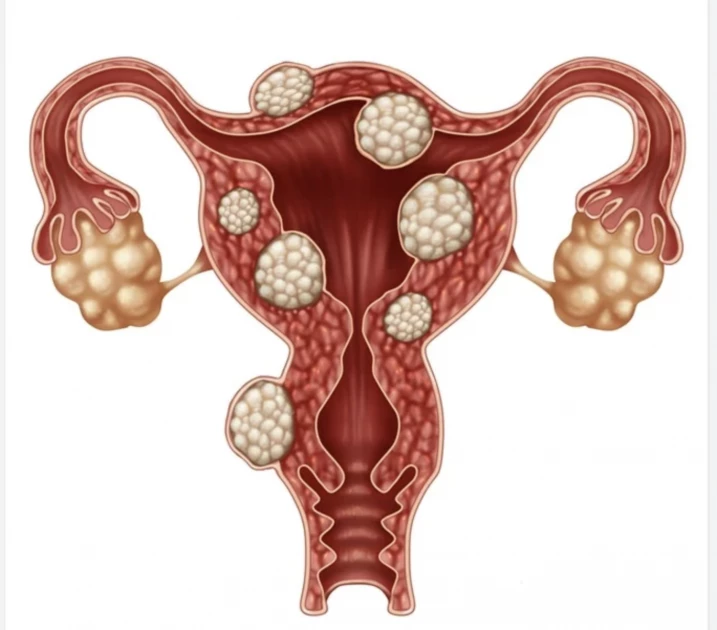Uterine Fibroids- does fibroids affects fertility in women? A gynaecologist explains

Many people have fibroids with no symptoms, whereas others experience pain, bleeding, or both.
Dr Grace Kanyi, an obstetrician and gynaecologist, describes uterine fibroids as growths in or on the walls of the uterus. They consist of smooth muscle cells and connective tissues.
“The symptoms depend on where the fibroid is located, there are common systems like heavy menstrual blending or painful cramps. Some other symptoms include heaviness in the pelvis, constipation, recurrent pregnancy loss difficulty in conceiving and painful sex on deep penetration,” she explained.
Fibroids can grow in the muscle wall of the uterus (myometrial), under the surface of the uterine lining (submucosal), and on the outside lining of the uterus (subserosal). However, they may develop in other areas where smooth muscle cells are found.
“One can have fibroids within the inner lining of the uterus, or the muscular layer of the uterus and this tend to affect a lot of women and it presents with extremely painful periods. One can also have fibroid near the fallopian tube and this causes infertility and miscarriages,” she said
“Fibroids came in different sizes and sometime a woman can suffer from all the three types and in severe cases the uterus can become disfigured. It is important to note that women above thirty years and of African descent have a high chance of getting fibroids,” she added.
Fibroids are becoming a concern among women of childbearing age, with fears of infertility mounting, more so among those yet to conceive. However, Dr. Kanyi demystifies the condition saying that a woman with fibroids can conceive with proper treatment.
“For women who get pregnant and they have fibroids, they are usually put on pain killers because it can get really painful. We have also observed that women who conceive with huge fibroids might have problems during delivery. We schedule for their removal approximately six months after delivery,” she said.
There are various methods used to diagnose fibroids. Radiology where pelvic exam and ultrasound to map out fibroids, their numbers and their location. Normal blood tests, physicals, a CT scan and MRI can also be done to test fibroids.
“Patients with fibroids, can either be treated through invasive or non-invasive methods that require giving medication or removal of the growth. When removing the fibroids, we usually counsel the patients that there can be a risk of recurrence,” she explained.
She notes that early detection and diagnosis go a long way and advises women to go on regular checkups, especially if they notice the symptoms.
Want to send us a story? SMS to 25170 or WhatsApp 0743570000 or Submit on Citizen Digital or email wananchi@royalmedia.co.ke
Comments
No comments yet.


Leave a Comment